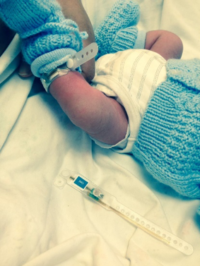Healthcare industry is always on the foray for cutting-edge technologies to meet scaling demands, both, on the administrative side and the patient side. There’s a paradigm shift in what the admins and the patients are looking for today. Automated hospital rooms, in-patient security, energy efficiency, hygiene compliances, real-time location details, live device tracking, and many more are all on the list and is crucial to a hospital’s reputation.
Healthcare IoT, now a dedicated technology sector, open up windows to best-fit solutions that cater to these essential requirements. Technologies applied in this sector is also evolving to do fine in pace with the changing demands. Let’s see some of the contributions that IoT has for the healthcare sector.
Infant Tracking for Security
IoT helps healthcare facilities to track infants and ensure that they are within safe premises or inside set geofences. Likewise, hospitals also use IoT technology to avoid child-swaps by associating an infant’s tag to their mother’s. Wearable tags and monitoring devices trigger real-time alerts and safety alarms, the moment infants are out of safe hospital premises or enter hazardous areas. These tags create awareness among hospital staff and healthcare professionals to be alert and proactive.

Wander Management
Wearable tags, with real-time location service (RTLS), help hospitals to engage wander management. This approach is crucial in keeping track of wandering patients, usually with memory disorders, and assist caregivers to monitor, manage, and prevent patients from missing out or ending up in wrong places.
Personnel Tracking
Personnel tracking technology enables automating attendance and timesheet logging of doctors, staff, and other personnel. This approach helps in getting workforce strength to streamline surgical workflows and optimize patient care.

Hospital Asset Tracking
Real-time visibility of hospital assets enables on-time retrieval of life-saving equipment and improving device allocation. During emergencies, asset tags help healthcare professionals to track and monitor critical hardware and ensure their availability at the right time. The asset tag’s application is not just restricted to equipment but also for everything else, including wheelchairs.
Hand-hygiene Compliance
On the clinical side, IoT also plays a vital role in maintaining hand hygiene compliance to eliminate hospital-acquired infections. It helps the management comply with the WHO’s My Five Moments for hand hygiene approaches. It starts with a sensor and ends with an action taken by a clinician. The technology employs motion sensors for hand hygiene compliance by monitoring the number of visits made by staff to the hand wash set-up.
Occupancy Monitoring
IoT technologies revolving around occupancy monitoring has drastically reduced congestion issues in hospitals and has improved space utilization to a great extent. Besides, it aids in optimizing staff allocation to alleviate service delivery bottlenecks in departments that handle more people or visitors. These are all factors that help hospitals in enhancing patient satisfaction and experience that in-turn speed-up health recovery.

Human-centric Lighting
IoT is at the core of driving Human-centric lighting (HCL). It enhances circadian rhythms, which boosts patient moods and well-being. HCL does so by maintaining comfortable room ambiances and adjusting the light as per patient activity like sleeping, reading, or relaxing. It’s proven that human-centric lighting aid in faster health recovery by improving sleep quality and reducing depression. Additionally, IoT facilitates wireless controls for automated room temperature setting and device functioning.
HCL can also ease the hospital’s inherently stressful atmospheres to help staff improve performance and reduce stress.
Energy Saving
IoT solutions automate switching ON/OFF of lights, fans, air conditioners, and other devices, solely based on use. This approach helps hospitals save immensely on energy consumptions. Daylight harvesting, by tuning lights to the time of day, month, or external environment is yet another feature that hospitals stand to gain hugely in this regard. Conserving energy by these methods also qualify hospitals for various energy rebates and titles.
AI Powered Analytics
IoT devices record and generate massive amounts of data which can be used to analyze clinical improvement. IoT solution providers offer AI-powered analytics that helps hospital managements in converting these data into actionable insights and easy-to-read reports. Accessed through simple dashboards, mobile apps, and web interfaces, data-driven analytics speed up decision-making with least possible errors and aid in implementing proactive care-delivery approaches.
Bottom line
In a world where device connectivity is at the forefront of redefining healthcare sector and its service delivery, IoT, with its numerous health technologies, stand most capable in meeting expectations. Healthcare IoT is making the already costlier healthcare sector less expensive, convenient, energy-efficient, and safer. It’s here to stay, and it’s going to be here forever. Let’s embrace it, and endless benefits will follow.
WiSilica has set numerous examples in setting up IoT for the betterment of the healthcare industry in its journey so far. Today, various hospitals from around the world use WiSilica solutions to ensure safe hospital environments, gain energy efficiency, and drastically improve space utilization and management.






